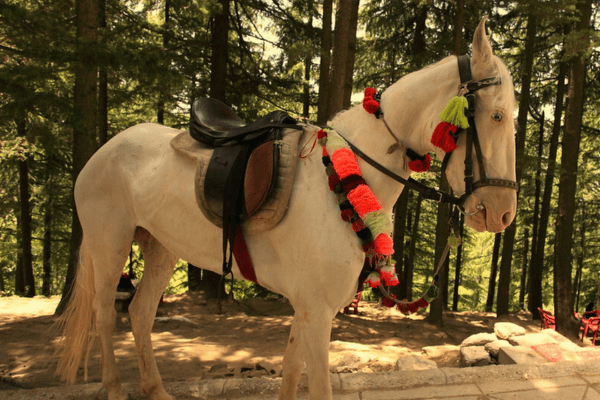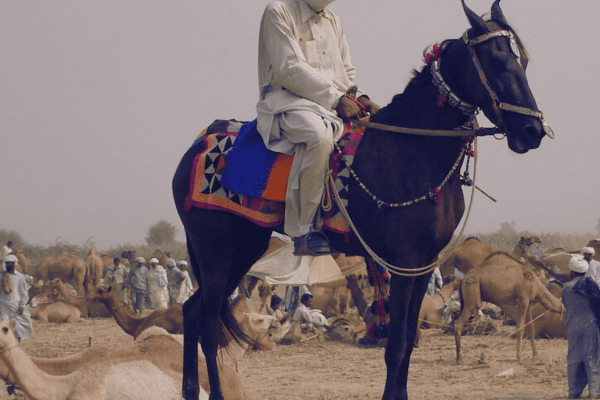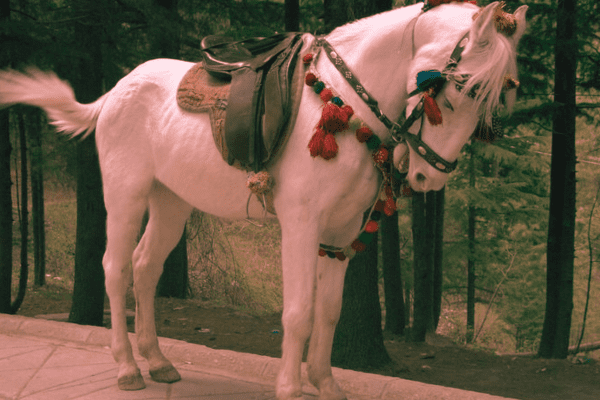The Baluchi horse, a noble breed originating from the expansive terrains of Pakistan’s Baluchistan, Sindh, and Punjab provinces, as well as the Sistan and Baluchistan areas of Iran, epitomizes a storied equine lineage.
This breed is particularly notable for its distinctive ear shape, which curls inward, bearing a striking resemblance to the Kathiawari horses of India. Renowned for its elegance and resilience, the Baluchi horse is a living symbol of the cultural and environmental diversity of the South Asian region.
Characteristics:
The Baluchi horse, an embodiment of grace and strength, boasts several distinguishing traits that set it apart from other breeds:
Color Variations: Typical of most breeds, Baluchi horses exhibit an array of coat colors from bay, chestnut and gray; these hues not only add visual interest but also showcase genetic diversity within the breed.
Build and Structure: With its light yet robust build, the Baluchi horse exudes elegance and agility. Its body represents a beautiful balance of strength and delicacy – ideal for its wide array of landscapes it inhabits.
Head and Neck: The breed’s most striking feature is its elegantly proportioned head. Complementing this is its long and slender neck which adds to its noble yet graceful character.
Legs: Baluchi horses possess strong yet refined legs, providing them with outstanding stamina and agility in difficult terrains they traverse. This combination gives these horses their distinct look.
Ears: One of the hallmarks of Baluchi horses is their distinctive ears, which curve inward and touch. Not only do these ears add to their aesthetic appeal but they also resemble India’s Kathiawari breed in many ways.
Breed Resemblance and Lineage: The Baluchi horse bears similarities with Indian Kathiawari breed and may be descended from Barb horses through Malian beledougou or Banamba breeds; thus indicating its strong ancestral legacy.
Height: The Baluchi horse typically stands around 14 hands in height. This height contributes to its balanced and proportionate appearance, making it suitable for multiple equestrian disciplines.
Rarity of Pure Lineage: Due to their diminishing numbers and bloodlines dilution, purebred Baluchis have become increasingly rare over time, becoming highly prized possessions and symbols of equine heritage.
History:
Originating in Pakistan’s diverse landscapes, the Baluchi horse can be found across Sind, Muzaffargarh, Baluchistan, Bahawalpur Dera Ghazi Khan and Multan. Although its exact roots remain obscured, similarities exist with Kathiawari horses from India as well as North African Barb horses suggesting an extensive and complicated ancestral tree.
Pure Baluchi bloodlines have become increasingly rare over time, making these animals of authentic lineage highly valued for their rarity. Renowned for their robust constitution and durable nature, Baluchi horses have become indispensable in local labor tasks – such as hauling tangas – due to their strength and stamina.
Baluchi horses have earned widespread acclaim in equestrian sports due to their extraordinary skill at tent pegging – an ancient sport which requires riders to skillfully pull a peg from the ground at high speed – showcasing its remarkable agility, speed, and synergy with riders. Tent pegging showcases both its physical capabilities as well as cultural significance within its regional home locations.


Temperament and Abilities:
Baluchi horses are widely celebrated for their gentle, cooperative nature and extraordinary willingness to work. Owners appreciate them highly for both riding and light draft work. Equestrian sports fans particularly enjoy endurance riding events which allow these horses to display their strength.
Cultural Significance:
For Baloch people, the Baluchi horse is more than just an animal breed – it serves as an emblem of pride and heritage, playing an integral role in festivals, ceremonies and folklore across their communities.
Regional art and literature frequently depict this connection between owner and horse that conveys deep respect and affection between these species of horses and humans.

